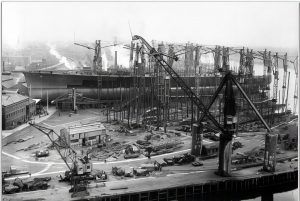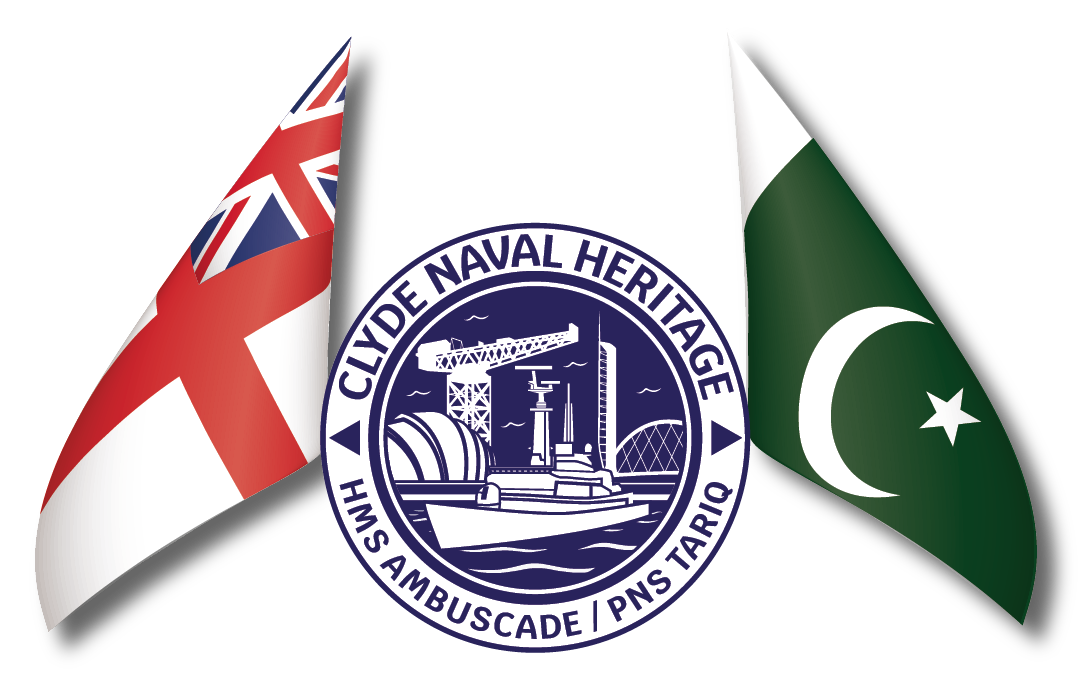HMS Hood was a British battlecruiser and the pride of the Royal Navy in the early 20th century. She was the largest warship in the world at the time of her commissioning, symbolizing British naval dominance. Built on the Clyde River in Scotland, the Hood became one of the most famous vessels of her time, both for her impressive size and tragic fate during World War II.
Origins and Design
Naval Context (Pre-WWI)
The origins of HMS Hood are rooted in the intense naval rivalry between Great Britain and Germany in the early 20th century. In response to Germany’s expanding navy and the launch of their battlecruisers, Britain sought to enhance its fleet. The Hood was part of Admiral John Fisher’s battlecruiser concept, which combined the heavy firepower of a battleship with the speed of a cruiser.
The design of the Hood was influenced by lessons learned during World War I, particularly the Battle of Jutland (1916). British battlecruisers like HMS Queen Mary and Invincible had suffered devastating losses due to their thin armour, which made them vulnerable to enemy shellfire. As a result, the Admiralty incorporated enhanced armour into Hood’s design to balance speed with protection.
The Design of the Battlecruiser
HMS Hood was intended to be the first of the Admiral-class battlecruisers. However, she was the only one of her class to be completed, as the other three ships (Anson, Howe, and Rodney) were cancelled or redesigned in the aftermath of World War I. At 860 feet long and with a displacement of over 42,000 tons, Hood was not only the largest ship in the Royal Navy but the largest warship in the world at the time of her commissioning in 1920.
Armament: Hood was equipped with eight 15-inch (381 mm) naval guns arranged in four twin-gun turrets, giving her significant firepower.
Armour: She had an armour belt up to 12 inches thick, significantly thicker than earlier battlecruisers.
Speed: Powered by Brown-Curtis geared turbines, Hood could achieve a maximum speed of 32 knots, which was impressive for a ship of her size.
Construction on the Clyde (1916–1920)
Shipbuilding Industry on the Clyde
The Clyde River in Scotland was one of the most significant shipbuilding centres in the world during the early 20th century. Glasgow and its surrounding shipyards were responsible for constructing some of the most important ships of the British Empire, from commercial liners to naval warships. Hood was built by John Brown & Company, one of the leading shipyards on the Clyde, renowned for constructing both battleships and famous ocean liners like the RMS Queen Mary.

Laying Down the Keel
Construction of HMS Hood began on 1 September 1916, when her keel was laid down at the John Brown & Company shipyard in Clydebank. The war effort placed considerable pressure on the shipyard to complete the vessel quickly, but with lessons from Jutland still fresh, her design underwent numerous revisions to improve her armour and survivability.
Launch and Completion
HMS Hood was launched on 22 August 1918, just months before the end of World War I. At the time of her launch, she was the largest and most powerful warship in the world. The launch was a significant event, drawing crowds to the Clydebank area to witness the massive battlecruiser sliding into the water. However, despite being launched in 1918, it took until May 1920 to fully complete and commission Hood into the Royal Navy. The delays were partly due to post-war budget cuts and the intricate finishing work required to fit out a ship of her size and complexity.
Service in the Royal Navy
The Flagship of the Fleet
Upon her commissioning in 1920, HMS Hood became the flagship of the Royal Navy’s Battlecruiser Squadron. Throughout the 1920s and 1930s, she was a symbol of British naval power, touring the world in what became known as the Empire Cruise of 1923–1924. This tour aimed to strengthen ties between Britain and its dominions, as well as to project British power globally. Hood’s visits to countries like Australia, New Zealand, South Africa, and Canada were significant diplomatic events.

The Interwar Years
In the interwar period, Hood remained one of the Royal Navy’s most important vessels. Despite her prestige, however, technological advancements in naval warfare began to outpace her design. By the late 1930s, the Royal Navy recognized that Hood’s armour was inadequate by modern standards, and plans were made to refit the ship. However, the outbreak of World War II in 1939 meant that these upgrades were never fully implemented.
World War II and the Battle of the Denmark Strait
Early Wartime Service
When World War II broke out, HMS Hood was called back into active service. She was initially tasked with patrolling the North Atlantic to protect shipping convoys from German surface raiders. Despite her age, Hood was still considered a formidable force, though she was increasingly seen as a relic of a bygone era.

The Hunt for the Bismarck
HMS Hood is most famously remembered for her final mission during the Battle of the Denmark Strait in May 1941. In May 1941, the German battleship Bismarck and the heavy cruiser Prinz Eugen broke out into the Atlantic, threatening Allied shipping lanes. Hood, along with the new battleship HMS Prince of Wales, was dispatched to intercept and neutralize the German warships.
On the morning of 24 May 1941, HMS Hood engaged the Bismarck and Prinz Eugen in the Denmark Strait. However, within minutes of the battle starting, Hood was struck by a shell from Bismarck, which penetrated her deck armour and detonated her aft magazines. This caused a massive explosion, and HMS Hood sank within minutes. Of her crew of 1,418 men, only three survived, making it one of the greatest naval disasters in British history.
Legacy of HMS Hood
National Mourning
The loss of HMS Hood was a profound shock to the British public. Her destruction represented not just the loss of a ship but a symbol of British naval supremacy. Memorials were held throughout the country, and the three survivors, Ted Briggs, Bob Tilburn, and William Dundas, became national figures due to their miraculous escape.
Survivors’ Escape
- Ted Briggs: Briggs, a signalman, was on the compass platform of the bridge. After the explosion, he was thrown across the deck by the force of the blast. He quickly realized the ship was sinking and rushed to escape. As Hood started to list, Briggs managed to reach the ship’s side and, upon finding the ship at a steep angle, he jumped into the freezing water.

- Bob Tilburn: Tilburn, an ordinary seaman, was also near the forward section when the explosion occurred. Like Briggs, he was thrown by the force of the blast but was able to reach the edge of the ship. He, too, jumped into the water as the bow started to submerge.
- William Dundas: Dundas, a young midshipman, was also near the bridge. When the explosion occurred, he followed the others to the side of the ship. He managed to leap clear of the wreck just before the ship sank beneath the surface.
Survival in the Water
The water in the Denmark Strait was frigid, with temperatures around 8°C (46°F). Despite the cold, Briggs, Tilburn, and Dundas managed to survive in the water for about two hours before they were rescued. They were eventually picked up by the destroyer HMS Electra, which had been part of the British force attempting to intercept Bismarck. Tragically, out of Hood‘s 1,418 crew members, these three were the only survivors.
The Search for Hood
In the decades following her sinking, numerous expeditions were launched to locate the wreck of HMS Hood. In 2001, an expedition led by the American entrepreneur and underwater explorer David Mearns finally discovered the wreck at a depth of 2,800 meters in the Denmark Strait. The wreck revealed that the explosion which sank Hood had torn the ship into two main pieces.
Influence on Naval Warfare
HMS Hood’s destruction highlighted the vulnerabilities of large surface warships in the face of modern naval gunnery. The lessons from the Battle of the Denmark Strait influenced naval tactics and ship designs, particularly emphasizing the importance of better armour protection and the rising dominance of aircraft carriers in naval warfare.

